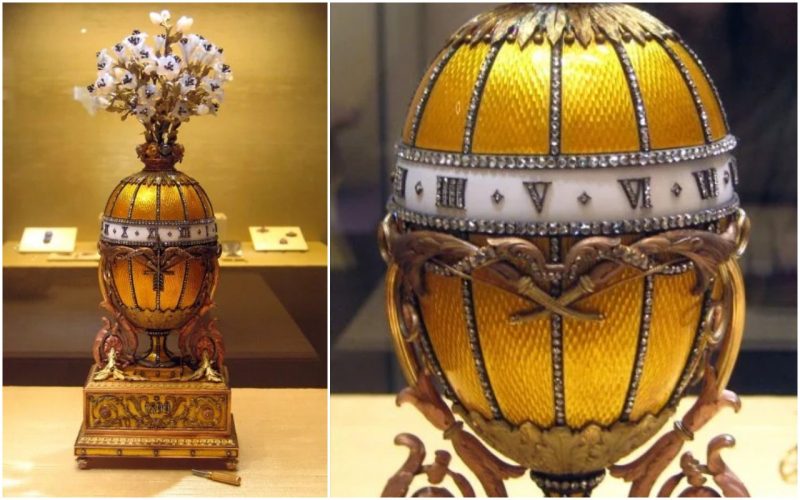To say that Fabergé eggs are among Easter’s most elegant decorations doesn’t come close to describing their historical and artistic significance. These gem-encrusted items represent so much more than other forms of decorative art.
The story of these pieces, decorative art at its finest, goes back to the 19th century, inextricably linked to Imperial Russia and the Russian royal family. It is a story about power, glory, luxury, prestige, revolution, tragedy, and, above all, exceptional craftsmanship. Here is how it all began.
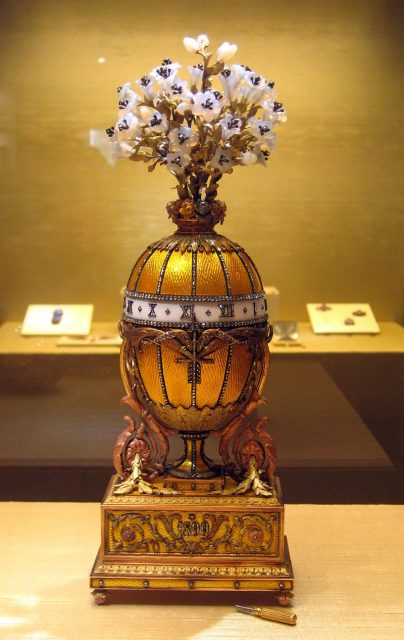
Easter of 1885 was a day of great significance for the Russian royal family because it marked the twentieth anniversary of Tsar Alexander III and Tsarina Maria Feodorovna’s engagement. A special occasion like that deserved to be marked in a special way and that is exactly what Tsar Alexander III had in mind when he placed an order for an egg from Fabergé as an Easter present for his wife. At first, the gift seemed to be just a simply decorated piece, but it had a hidden surprise. Inside was a golden yolk. And inside the yolk was a plump golden hen. And inside the hen, there was a diamond-set crown and a tiny ruby pendant.
Maria Feodorovna liked the gift so much that the Tsar decided to turn this into a yearly tradition, which was apparently taken quite seriously by the royal family in the following years. The Tsar’s successor, Nicholas II, followed the tradition, presenting eggs to both his mother, Maria Feodorovna, and his wife, Empress Alexandra Feodorovna, every year.
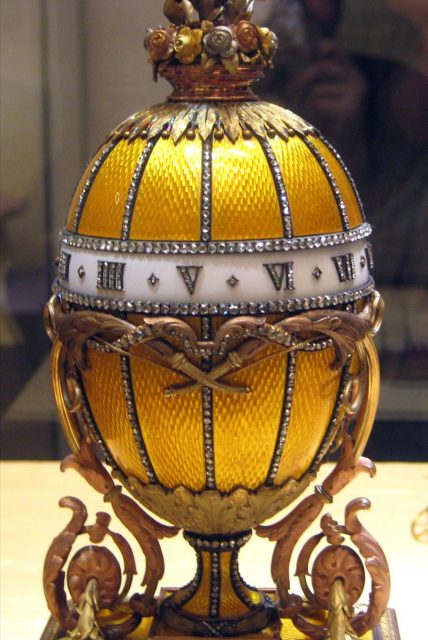
Around 50 Easter eggs were made for the imperial family between 1885 and 1917, but only 42 have survived. Each of the eggs is unique in its own way, having an original design and containing a different hidden surprise. One of these Imperial Easter Eggs is the Bouquet of Lilies Clock Egg, also known as the Madonna Lily Egg.
Presented by Tsar Nicholas II to his wife for Easter 1899, the Bouquet of Lilies Clock Egg is among the largest of all Fabergé eggs ever produced.
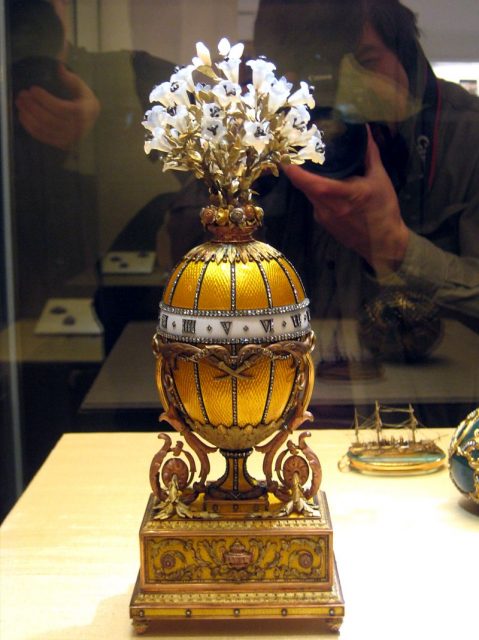
Workmaster Michael Perkhin, who worked on this particular egg under the supervision of Peter Carl Fabergé himself, was clearly inspired by the design of French Louis XVI-era clocks, but what makes his creation unique is that he cleverly used the egg as a face of the clock.
In the creation of this egg, Perkhin apparently made a good use of the symbolic language of flowers. He combined roses (symbols of romance, love, beauty, and perfection) and white lilies (symbol of the Virgin Mary’s purity and innocence) with burning torches that ultimately emphasize the significance of family love.
Two eggs planned for gifts in Easter 1917 were never delivered because of the Russian Revolution, and the royal family being overthrown. Nicholas, Alexandra, and their children were all killed.
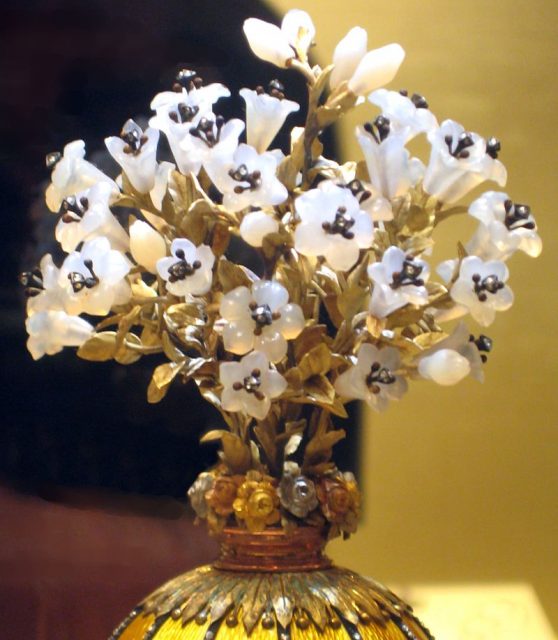
Today, the Bouquet of Lilies Clock Egg, along with nine more Fabergé eggs, resides in the Kremlin Armoury Museum in Moscow, one of the oldest museums in Russia. Many of the other Imperial Easter Eggs can be seen in different museums across Russia and some are housed in museums in the United States.
Nine of them are owned by Viktor Vekselberg, an oil and gas tycoon who bought the eggs for around $100 million in 2004. His collection can be seen at the Fabergé Museum, located in the Shuvalov Palace in St. Petersburg.
